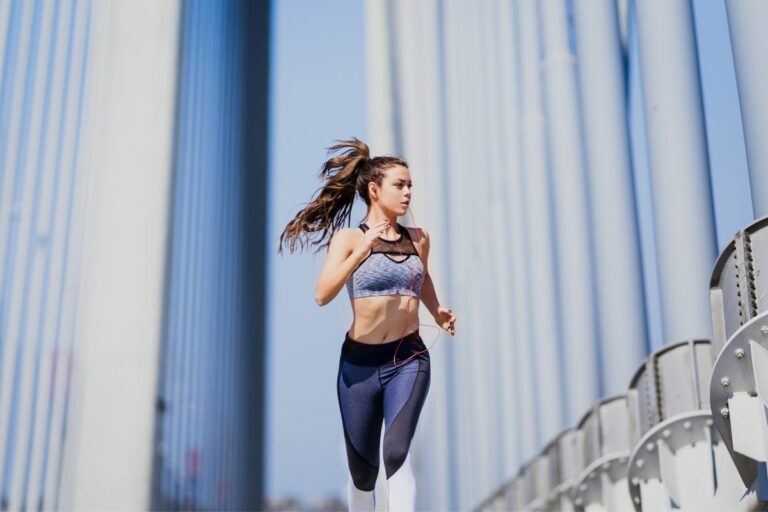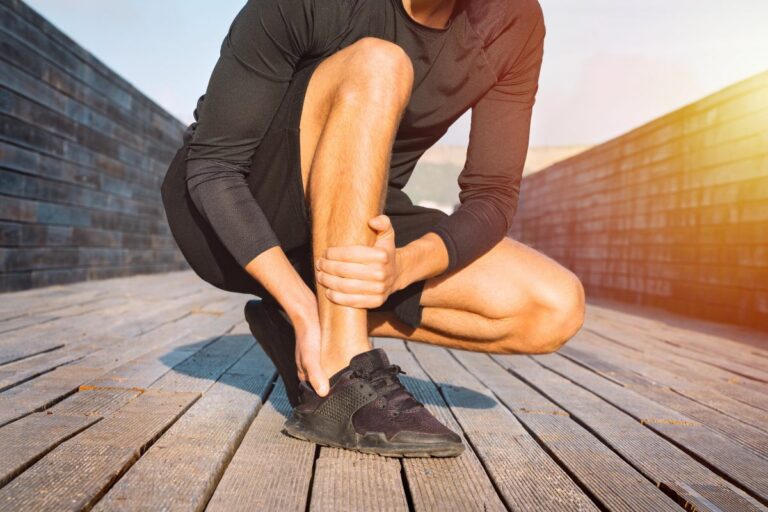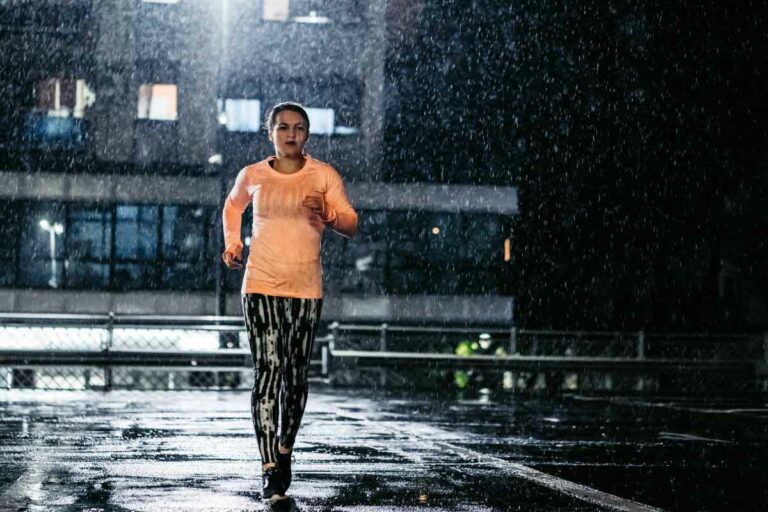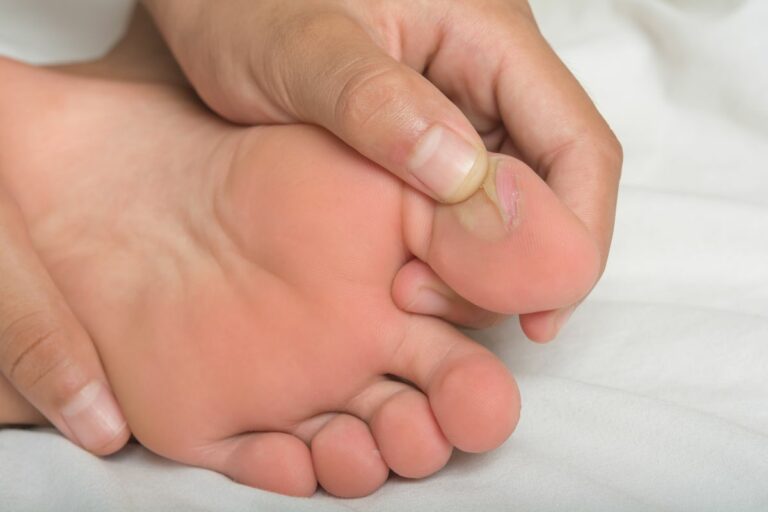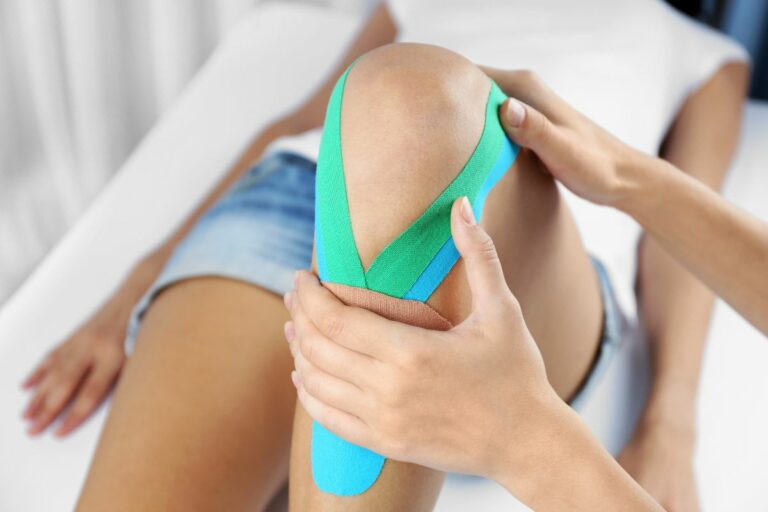What Is Runner’s Face: Can Intense Exercise Cause Premature Aging?

Running is one of the best cardio sports for your body, but what people don’t often talk about is the infamous “runner’s face”.
Runner’s face is a term used to describe sagging in the face.
However, as sagging and wrinkles happen with old age anyway, is running actually the cause of this?
As a runner’s face is often spoken about as a MYTH, you might be wondering if it’s something you should be concerned about.
Of course, you can’t exactly avoid the effects of aging! But it might be worth knowing if the appearance of wrinkles is a result of running.
Here is everything you need to know about whether the runner’s face is fact or fiction!
What Is Runner’s Face?
Despite what you might think, a runner’s face doesn’t refer to the sweaty, red-faced mess you become after a race or marathon.
Instead, a runner’s face is a term used when your skin becomes saggy and gaunt-looking, making you appear older than you actually are.
Also, contrary to popular belief, a runner’s face isn’t something that occurs after decades of running.
Even the youngest of runners can develop a runner’s face, and while it might cause permanent sagging to your skin, it’s not dangerous.
How Does Runner’s Face Happen?

There are several factors that CONTRIBUTE to the appearance of a runner’s face.
Firstly, the motion of running and constant up-and-down movements are inevitably going to make your skin move.
Not only this, but the impact of running on hard terrain also helps to make your skin bounce.
So, it’s inevitable that your skin is going to MOVE alongside this constant movement. The skin is ELASTIC, it’s bound to be affected the most.
However, this theory doesn’t work by itself. There are other factors that can contribute to this theory, including excessive sun exposure and low body fat.
It’s no secret that when you spend too much time in the sun, the harmful UV rays are going to do more than just give you a nice tan.
Without adequate PROTECTION, excessive exposure to the sun can lead to the loss of collagen, which is responsible for keeping your skin young and full of elasticity.
So, exposure to the sun leads to wrinkling and sagging of skin.
Not only this but it is believed that those with low body fat are more prone to developing runner’s face compared to those with high body fat.
The theory is that if you have high body fat, then you’ll have more elasticity in your face, meaning it shouldn’t sag so much.
However, if you have low body fat, then the theory suggests that there is more movement in the skin due to the lack of fat, which can result in the appearance of a runner’s face.
Will I Get Runner’s Face?
To put your mind at ease – not every runner gets a runner’s face. Scientists have researched the causes of runners’ faces, and the truth is, there isn’t one reason for this.
It’s not something you can avoid, but it’s also not something that every runner is going to get.
Ultimately, the pros outweigh the cons when it comes to running.
There’s no point avoiding running just because you don’t want to risk getting a runner’s face.
People can develop the effects of a runner’s face for many other reasons, such as exposure to the sun without activity, illness, and even just old age.
Truth is, anyone who spends enough time outdoors in the sun is at RISK of getting a runner’s face.
It’s not exactly a harsh reality, either, because it’s not detrimental to anyone’s health.
So, if you’re a runner as well as a golfer, gardener, sailor, surfer, cyclist, construction worker, tennis player, or even a skier, then you might be more prone to developing a runner’s face.
Is Runner’s Face Bad?
There is ultimately nothing wrong with the runner’s face. If anything, a runner’s face is just your skin’s way of saying that you spend a lot of time exercising outside, which is fantastic for your body.
So, even if your skin starts to look a little gaunt, a runner’s face truly isn’t the end of the world.
However, a runner’s face might be a sign that you need to take care of your skin while running.
How Can Runners Look After Their Skin?
While you can’t necessarily stop a runner’s face from happening in the future, there are ways to protect your skin to ensure that it stays safe and healthy.
Firstly, always make sure to apply sunscreen with a high SPF.
Even if you want to develop a nice tan, wearing a good SPF sunscreen designed for your skin will reduce the risk of sunburn and damage from harmful UV rays.
Sun damage is a real issue, so the first thing is to apply sunscreen during summer.
You can also wear a hat or visor to protect your skin from the sun.
Secondly, make sure to apply a good moisturizer every day.
If you’re conscious about the appearance of sagging skin (whether from age or if you think running might contribute to wrinkles), then look for an anti-aging moisturizer that will plump your skin.
Last but not least, stay hydrated whenever you run, regardless of the time of day.
Dehydration can result in several illnesses and problems, and poor skin quality is one of them.
But what if you want to go that extra mile? What can you do to avoid a runner’s face? Here is a list of some common advice:
- Hydrate. Keep a water bottle with you on the run, and drink water to keep your skin moisturized and elastic.
- Don’t run in the sun.
- Use sunscreen. If you run in the sun, use sweat-resistant sunscreen.
- Practice moderation. Balance your training with rest days and healthy diet, and sound sleep.
- Apply moisturizer every day.
- Use Nicotinamide. Nicotinamide is a form of vitamin B3 that can reduce the effects of UV exposure.
- Take antioxidants. Have a diet rich in antioxidants. They improve cellular regeneration.
- Take Vitamin C and E serum.
- Use Botox and fillers.
Conclusion: Is Runner’s Face A Myth?
Let’s get the facts straight – scientists don’t have enough evidence to prove that the runner’s face is real, which is why it is currently classified as a myth.
So basically, there is no such thing as a bouncy face sagging. And sun damage can be prevented with sunscreen.
Any theories you might hear about the movement of running contributing to a gaunt facial structure aren’t necessarily true, but they aren’t false, either. The same applies to exposure to the sun.
This is because you can apply these theories to any outdoor activity and blame that for the “runner’s face”. The reality is that skin will sag with age and exposure to the sun regardless of whether you run or not.
One suggested cause of a runner’s face is losing so much weight that you just look too thin (so actually running worked).
While a runner’s face is technically a myth, it doesn’t hurt to PROTECT your skin from its effects.
So, make sure to keep hydrated, wear proper sunscreen to keep your skin healthy, and avoid common mistakes after a run (especially if you are a beginner).

